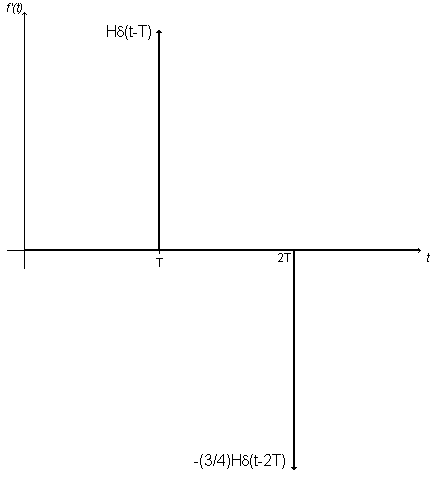Skip over navigation

The gradient is infinitely steep at the points where there is a step in value. These arrows are called delta functions. They are thought of as infinitely high and thin, and have a notional area equal to the value of the step jump. Thus when you integrate this derivative, you get back to the original step function.
A system's (for example a car suspension) response to an impulse (you might think of it as a sudden "bang") is very useful, and can be used on a process called "convolution" to find a system's response to any input.



Or search by topic
Number and algebra
Geometry and measure
Probability and statistics
Working mathematically
Advanced mathematics
For younger learners
Ramping it Up
Age 16 to 18
Challenge Level 





- Problem
- Getting Started
- Student Solutions

The gradient is infinitely steep at the points where there is a step in value. These arrows are called delta functions. They are thought of as infinitely high and thin, and have a notional area equal to the value of the step jump. Thus when you integrate this derivative, you get back to the original step function.
A system's (for example a car suspension) response to an impulse (you might think of it as a sudden "bang") is very useful, and can be used on a process called "convolution" to find a system's response to any input.
You may also like
Ball Bearings
If a is the radius of the axle, b the radius of each ball-bearing, and c the radius of the hub, why does the number of ball bearings n determine the ratio c/a? Find a formula for c/a in terms of n.
Overarch 2
Bricks are 20cm long and 10cm high. How high could an arch be built without mortar on a flat horizontal surface, to overhang by 1 metre? How big an overhang is it possible to make like this?
Cushion Ball
The shortest path between any two points on a snooker table is the straight line between them but what if the ball must bounce off one wall, or 2 walls, or 3 walls?

